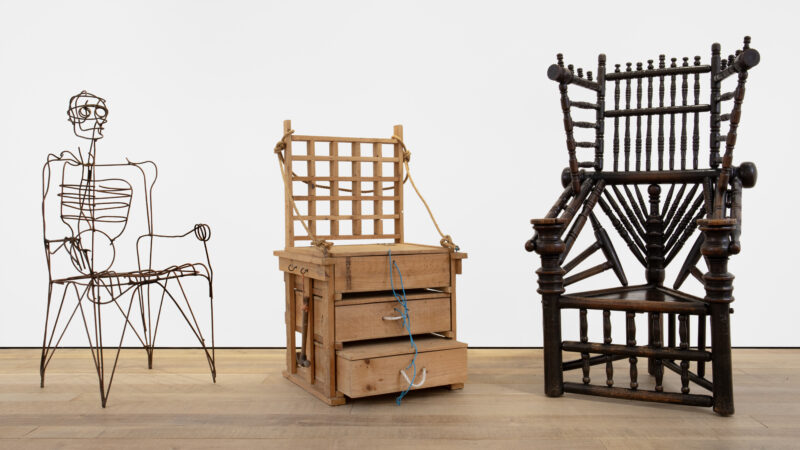So it really is all about money.
Where I come from, if you tell people your job has something to do with art, the conversation is soon about cash. People are schooled to see art in this way by the Antiques Roadshow and news stories about cash-in-the-attic art discoveries.
And of course, this philistine assumption that the only really interesting thing about art is its financial value is totally correct. For it is shared by the most powerful people in the art world, on a scale that makes a mockery of any belief in art as a road to revelation, an instrument of social progress or any of the other fragile ideals that dreamers attach to it.
On Tuesday night at Sotheby’s the money rolled in. Gerhard Richter’s Abstraktes Bild sold for £30.4m, a new record for the German painter who has become one of the most expensive post-1945 artists. Someone also paid £8.4m for a Lucio Fontana canvas slashed by the artist 23 times – does the price of a Fontana go up with each cut?

A Francis Bacon self-portrait sold for £14.7m, while Californian painter Jonas Wood made 10 times his previous auction record when his 2010 painting Studio Hallway went for £365,000.
Is any of this art worth such soaraway prices? Put it another way. Think of what the anonymous Richter buyer might have achieved by giving £30.4m to Syrian refugees or the fight against Ebola. There’s a disgusting quality to the art market. This money is more than stupid. It is an insult to creativity, for even the most sincere artistic efforts, the most brilliant visions, are reduced to cogs in a massive commercial machine.
Reports on recent auctions including this one stress the increasingly manipulative efforts by the big auction houses to maintain the impression of a boom market. Buyers are firmed up before the auction starts, and reliable sellers like Richter and Bacon are foregrounded – an auction is really an elaborate piece of theatre where the surprises are as carefully planned as they are in wrestling.
Yet any fears, or hopes, of a softness to the market behind these machinations appear unfounded. Only a few days ago, Gauguin set a new record for the most expensive painting ever sold. From private sales like that one to this week’s auctions (there’s another at Christie’s tonight), the art business is so massive and relentless that it has now dwarfed the actual production of exciting new art.
Fans of the market claim it is good for art, but the example of London disproves this. Two decades ago London had a genuinely exciting art scene – from Rachel Whiteread to Lucian Freud, really powerful images were being created – based on comparatively few galleries and collectors. Today it is one of the great capitals of the art market, its cultural life deeply shaped by the commercial events Frieze and Frieze Masters. Has London’s home-grown art become more creative in those two decades? No, it has clogged up. The selectors of the Turner prize are finding it harder every year to put together a convincing shortlist. The art scene is an undelicious cocktail of ageing Hirst-era names, media celebrities and an apparently inexhaustible supply of so-so youngsters who come and go without any of them standing out.
The market, however, is doing great. Who needs new art when there are so many established modern masters to sell for big money?
guardian.co.uk © Guardian News & Media Limited 2010
Published via the Guardian News Feed plugin for WordPress.







